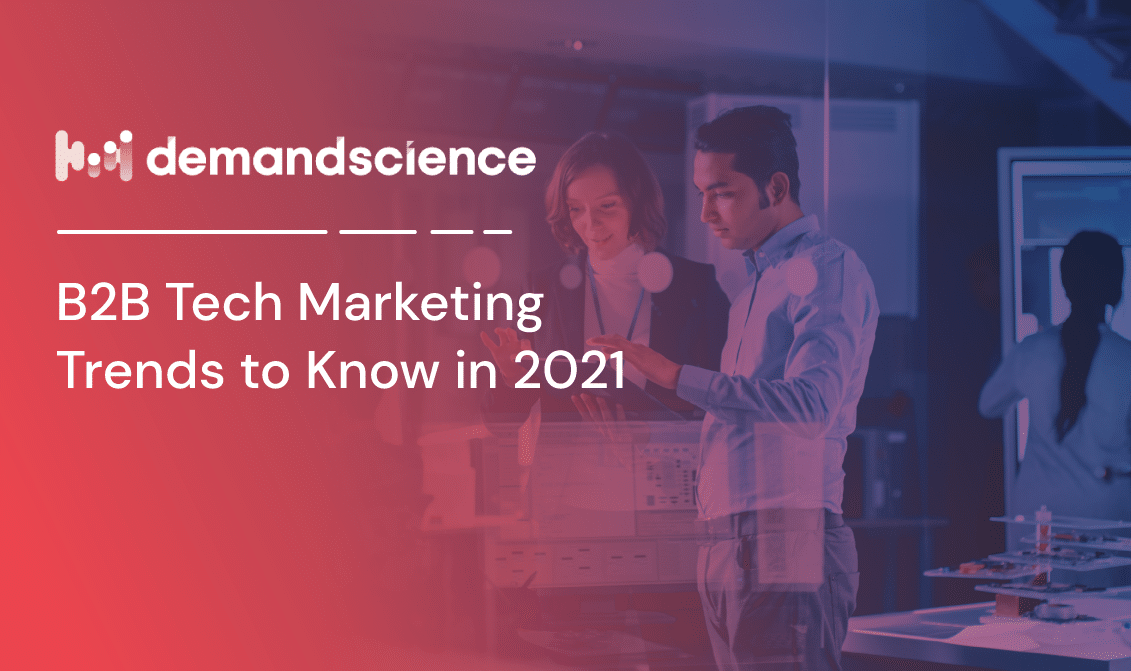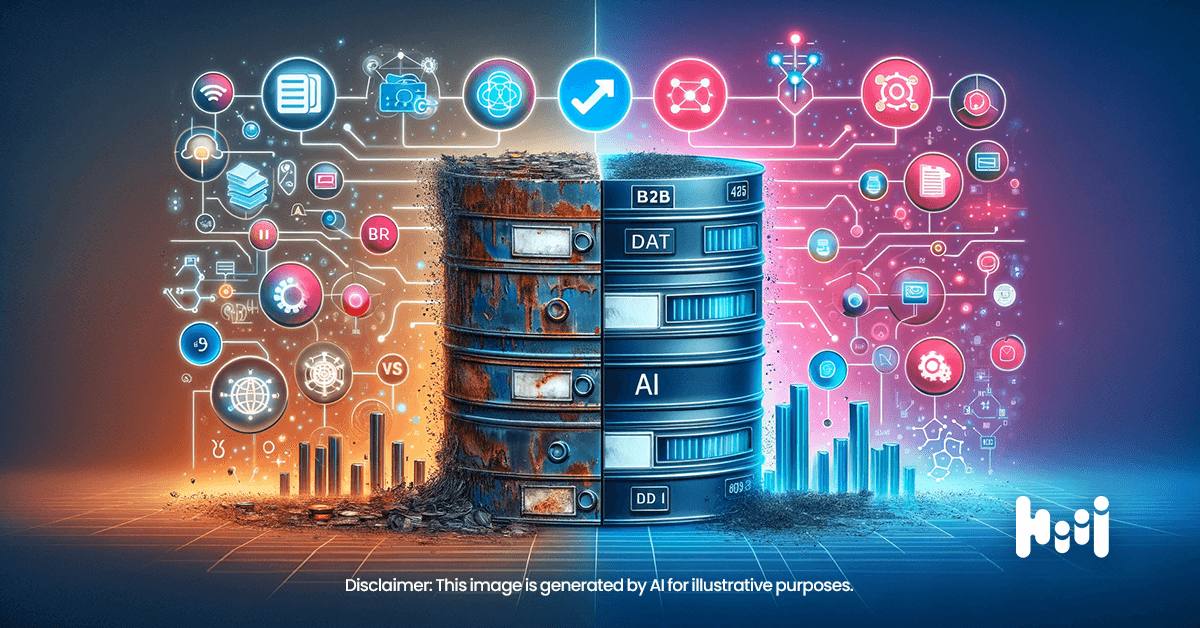To stay competitive, communications teams must keep up with industry trends as technology advancements continue to disrupt the B2B marketing space . The continuous influx of new technologies and execution methods leaves marketing professionals with the challenge of directing their energies.
A complete transformation for your business might not happen by keeping up with the newest B2B tech marketing trends but knowing about them will keep you level with your competitors. By carefully reviewing your market position and the implication of trends, you have the needed insights for strategic decisions. This article covered some of the tech trends that are revolutionizing B2B marketing in 2021.
Account-Based Marketing
Towards the end of 2020, 42% of marketers polled claimed the coronavirus pandemic had shifted their ABM goals. Forty-nine percent of those surveyed indicated their goals had altered to focus on expanding business with existing customers. Twenty-six percent increased their expenditure, while 30 percent cut their expenditures as a result of the pandemic.
The sales and marketing teams must work together closely to achieve success with this strategy. Teamwork between sales and marketing stakeholders may assist marketers in identifying the ideal prospects for an ABM approach within the target demographic. Small firms might benefit from this sort of approach and interconnectivity of sales and marketing departments. They can use ABM to optimize their marketing efforts and resources on the most viable prospects.
ABM has a 97% better return on investment than other marketing initiatives. Only 6 out of 100 B2B marketers polled by Demand Gen Report and ABM In Action stated they had not yet used ABM. According to practitioners, it aids in the alignment of sales and marketing and the better utilization of marketing resources.
Marketing Automation
At this point, it is possible to automate content marketing delivery at virtually every step. With the widespread introduction of marketing automation tools, systems and plugins, content is now more efficient and effective, from keyword research to content creation and delivery. Going by Forrester’s research, the estimate is that expenses on global marketing automation will reach $25 billion by 2023.
Some Martech options have wider acceptance, but 44 percent of B2B brands currently utilize marketing automation solutions. Since these technologies are usually interconnected, it is almost impossible to shun automation in this marketing age.
Artificial Intelligence
Artificial intelligence (AI) is one of the options for tackling customer experience demands. Consumers, for instance, can use chatbots to obtain an immediate response to a basic question. Also, they give customer care agents time to deal with other things, like tackling more complicated issues.
Chatbots have gained popularity, but they are just one type of artificial intelligence for marketers. AI is increasingly being integrated into advertising platforms, allowing publishers and advertisers to interact with more efficiency, speed, and accuracy – all at a pre-determined price point.
AI is yet an emerging tool in the content marketing sector when viewed from the actual creation perspective. It can aid in the translation of structured data sets and obtaining important insight or information through machine learning. Still, it is more challenging to change the obtained information into organic content. This is not a deterrent for experimentation, and for a good reason.
Video Marketing and Augmented Reality
These are technologies that B2B marketers should not miss now that sophisticated digital marketing methods like video content and augmented reality are increasingly available.
Video marketing is highly effective for B2B firms since it adds a visual element to a buyer’s journey. To boost their marketing efforts, more companies are turning to case studies for video content. This trend is becoming popular in the B2B industry; currently, 70% of B2B buyers view videos when researching a product before making a purchase.
In 2021, the amount spent on video advertising is expected to continue rising. Being stuck at home has made streaming video something more of a lifeline. Videos can be entertaining and educational. Branded videos may help B2B buyers learn about new trends and develop new skills. By 2024, expenses on video advertising are predicted to increase to $12.66 billion, a rise from the $10.18 billion spent in 2019.
On the other side, augmented reality has the potential to elevate video content to new grounds. This applies mostly when the B2B firm has a major product to display or a visually stunning site to present. AR may be a great method to enhance the B2B buyer’s journey by allowing consumers to try things out digitally before making a purchase.
Evolution of Social Media Channels
LinkedIn remains the best platform for B2B marketers to reach their target consumers, with over 706 million users. In 2020, the professional networking site nearly supplanted conventional in-person gatherings, indicating that even more professionals are using the platform. Brands can use LinkedIn’s live streaming function to communicate directly with consumers and then use the footage as a valuable asset ongoingly.
Although Facebook, Twitter, and Instagram remain the most popular ways to reach customers, a new platform called TikTok has been gaining traction since 2020. While the website’s core audience is younger folks, this applies to every other social networking website just starting. Joining the train can help B2B businesses gain a significant influence on the platform in 2021. The video-centric platform is ideal for innovative marketing campaigns that can potentially go viral.
Email Personalization
Aside from LinkedIn, email marketing has shown to be a reliable distribution medium for B2B marketers. Email marketing is the most successful channel for generating income for almost 60% of B2B marketers, and it is also the third-best way to discover information. The first and second remains recommendations from colleagues and industry thought leaders.
Personalization has proven highly effective for increasing email margins even more. Seventy-one percent of email marketers who have adopted personalization claimed the ROI on their campaign was either good or outstanding, compared to only 41 percent of those still in the early execution stage. It is no longer about sending bulk emails that achieve no results, thanks to the abundance of templates and tools that make personalization, outreaches, and audience segmentation easier than ever. It is now easier to analyze and forecast the performance of email campaigns.
Personalized emails have been shown to enhance transaction rates by six times, and email newsletters are among the top three forms of content utilized by B2B marketers in the previous year.
Customer Retention Through Targeted Marketing
The concept of customer retention revolves around keeping existing customers. It is just as important to gain the loyalty of old customers as it is to find new ones. The reason behind this is simple: selling to an existing customer comes with less hassle than selling to a new prospect.
Such classic B2B marketing trends necessitate a set of operations that preserve and facilitate customer relationships, assuring sustained sales, decreased cost per sale, and a consistent ROI funnel. Your clientele will be more valuable and expansive if you improve your customer retention marketing techniques. According to the Harvard Business Review, a 5 percent improvement in client retention equates to a 25 to 95 percent boost in earnings.
And, let us face it, getting a new customer usually costs 5 to 25 times more than keeping an existing one. A lot of time and resources go into find new customers, and you will still need to spend more money to keep them satisfied. Finally, a consistent and loyal client base is an important asset for every firm. And keeping them happy should always be at the top of your priority list. This trend is expected to continue even beyond 2021.
Audio-Based Apps and Voice-Controlled Virtual Assistants
Almost everyone enjoys interacting with voice-bots. These are our helpers, handling all of our requests and acting in the manner we wish. Consumers are increasingly utilizing voice search to play their favorite tunes, ask questions, and receive directions. According to a study, voice search is in high demand among today’s audience, with over one billion queries conducted by voice internationally. Furthermore, this figure is predicted to reach 5 billion by 2021 and 6.4 billion by 2022. Such statistics demonstrate its opportunistic nature and the need to include this trend in B2B marketing strategies.
Predictive Analytics
Predictive analysis is synonymous with personalized suggestions, and it uses past user behavioral patterns, consumption, and purchasing charts to provide relevant results. If predictive analysis sounds foreign to you, it entails using past data and analytic tools to forecast future results. Marketers may obtain detailed insights into past campaigns, predict consumer trends, learn about behavioral patterns, and modify future marketing strategies based on derived conclusions using modern technologies like statistical modeling and machine learning.
Businesses may use predictive analysis to attract, keep, and nurture new and existing customers. Marketers may also utilize predictive analysis to improve their marketing campaigns, get more leads, convert more customers, and determine cross-selling possibilities.
Final Thoughts
Every year, technology advances. Such rapid changes need a sharp eye, a quick mind, and a dynamic B2B marketing approach. Of course, if you want to do well in 2021, you will need to be aware of the greatest B2B marketing trends. Treat these trends as tools for your marketing warfare. Every B2B marketing trend, from personalization to artificial intelligence, help you stay competitive in the market. And, if you want to beat your opponents, accepting change is the first step.











